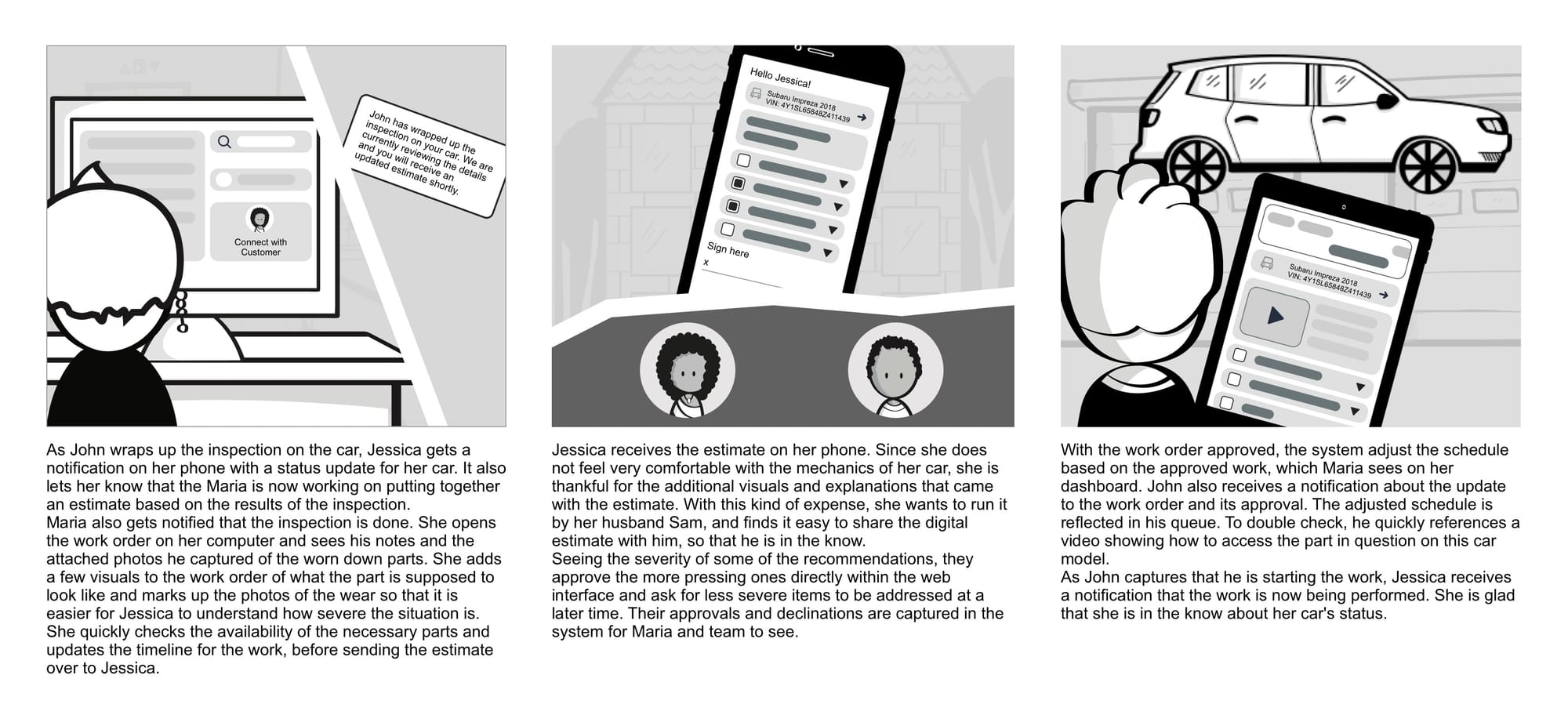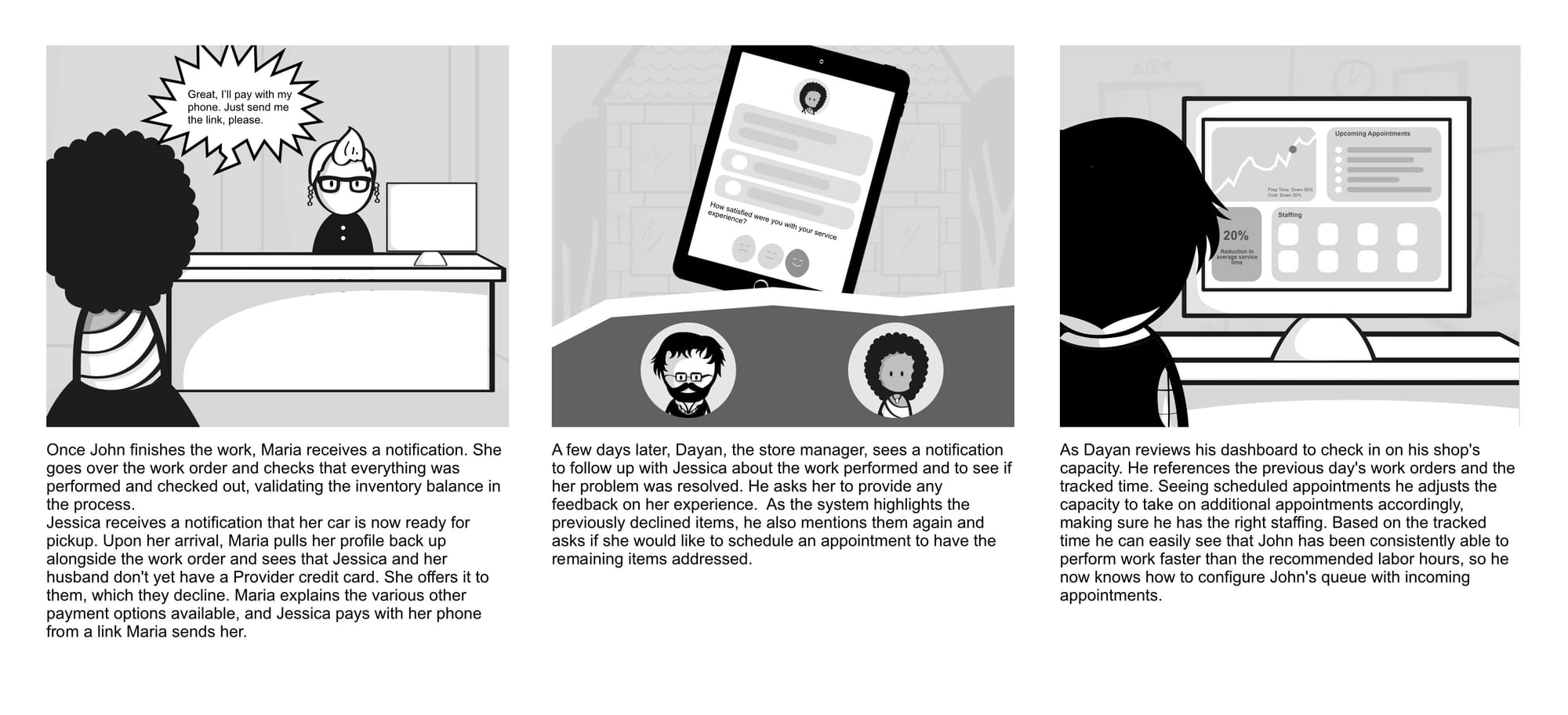Digital Communication Platform for Major Tire Service Chain
Led research-driven redesign that discovered operational efficiency was the true business priority, fundamentally reshaping strategy based on field insights across 4 states. The solution established a "single source of truth" eliminating costly manual data re-entry and errors while improving customer transparency.
Role: Design Lead | Timeline: 12 weeks | Year: 2024
Situation: A leading tire manufacturer and service provider suffered from communication breakdowns across retail locations. Manual data entry, illegible handwritten technician notes, and lack of direct customer-technician communication created operational inefficiencies. Multiple data re-entry points caused errors in critical information like DOT numbers and parts, while customers had no access to proof of identified issues without shop visits.
Task: Lead design of an integrated communication platform streamlining information flow between customers, front desk staff, and technicians while working within existing system constraints and budget limitations.
Action: I facilitated executive workshops defining business problems and success metrics, then conducted field research with customers, staff, and technicians across 4 US states. Initial focus on upsell optimization shifted to information accuracy and process efficiency after research revealed the true operational impact. I mapped current and future state experiences with store manager input, designed OCR technology integration for scanning VIN numbers and mileage, and explored text-to-speech inputs for technicians to dictate inspection notes. I created video recording capabilities for transparent customer communication and designed customer/vehicle profiles tracking history for personalized service recommendations. I developed system integration matching inspection findings to billing codes while accounting for physical constraints like glove-wearing technicians affecting touchscreen use.
Result: The solution projected dramatic improvements across multiple business metrics: expedited check-in reducing wait times for customers, enhanced customer education about preventive maintenance increasing service revenue, real-time productivity tracking enabling better capacity forecasting, and live service status visibility improving operational transparency. Most significantly, the research-driven approach uncovered that the true business problem wasn't upselling (initial assumption) but operational efficiency—establishing a "single source of truth" would eliminate time-consuming manual data re-entry, reduce errors in critical information like DOT numbers and parts, and prevent the costly back-and-forth between managers and technicians. This strategic pivot, driven by field research across 4 states, fundamentally reshaped the solution from a revenue tool to an operational efficiency platform.




Always looking to help create innovative solutions. If you have a project you'd like help with or if you want to learn more about this project or others, don't hesitate.
